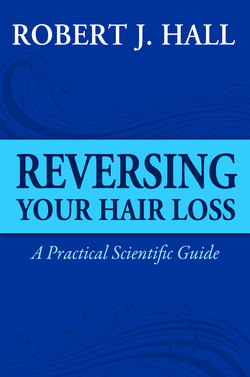Читать книгу Reversing Your Hair Loss - A Practical Scientific Guide - Robert J. Hall - Страница 6
На сайте Литреса книга снята с продажи.
Chapter Two First Impressions
ОглавлениеWe are all biologically primed to choose mates that are mature, healthy and likely to live as long as it takes to help raise any offspring through at least the first stages of infanthood. This last fact is important amongst humans because children are born relatively helpless compared to other animals. Foals walk and suckle within minutes of their birth, for instance, whereas human infants can do no such thing.
As a rule judgements based on other criteria, however, are not a peculiarly human or even mammalian trait. Any species that uses sexual reproduction (as opposed to asexual, amoeba-like reproduction) always uses specific signals to determine fitness for reproduction. If we take birds as an example, then the prime criterion for their breeding standards can be based upon anything from physical size, aggression, plumage, song repertoire, nesting ability, territorial control or proven food-gathering ability to name but a few.
Humans are not so very different within this scheme of things. Even in times and places where marriages are or were arranged by virtue of economic rationality or dynastic considerations, physical conjugation based on mutual attraction still happened outside of the marriage contract. In fact, it was so common that, rather than risk internecine warfare, a blind eye was turned to ‘affairs of the heart’ and the occurrence was regarded as something simply inevitable.
And inevitable it was. The human sexual instinct is an incredibly powerful thing. Indeed it needs to be for all human life depends upon it for continued existence.
During that initial glance when one decides whether an individual falls into the category of being reproductively desirable, the primary factors that are taken into account (especially by women) are physical symmetry, especially in the face (a sign of genetic health) actual physique (in judging men, height and broad shoulders count for more than a pot belly) and a healthy head of good quality hair. In the case of a shaven head, a healthy, even, facial skin tone gets taken into account instead.
These immediate visual clues take less than a moment or so to register and if a person fails to give a less than glowing first impression then they have a great deal of work to do to make up the lost ground. As a result, men who are short, fat and balding have to go out of their way to emphasise their social power instead of their genetic health. These displays stereotypically include big cars, sharp tailoring and fat cigars. These men also surround themselves with subservient males; insist on being loud and dominant around other males and keeping the trappings of wealth and social status on obvious display. None of which goes unnoticed by other males, or those females that would prefer a comfortable lifestyle as opposed to a procreative one.
Females, of course, in every culture ever examined, ancient and modern, have used cosmetics to enhance their appeal. Two of the first products ever used were red colouring applied to the cheeks, and red, waxy substances to the lips, both of which were used to imitate the signs of fertility, robust health and procreative willingness. They are still used today. Female clothing is also used to indicate availability and willingness to consider mating, as is the length and way the hair is worn. There is not a single human culture that has ever existed where the women within it did not groom, style and adorn their hair to proclaim their sexual status.
It is very little wonder, then, that both sexes go to extraordinary lengths to keep their hair in good condition. It forms one of our most basic social drives, along with shared levels of hygiene and agreed cultural dress codes.
Your hair’s condition might be important - but actually keeping it is even more so. Now you know why.
